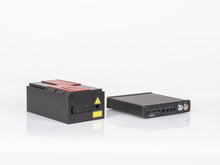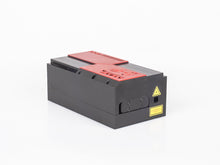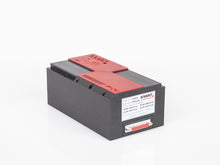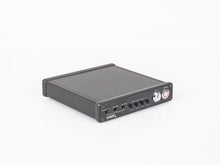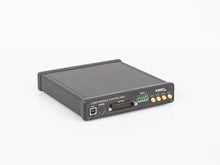RYCV-200
RYCV-200
Price on request

Description
In fluorescent microscopy, clinical diagnosis and biomedical science in general (protein cell imaging, cancer diagnostics, flow cytometry), different light sources are used to excite the fluorophores: LEDs, supercontinuum lasers, monochrome lasers.
Usually, multiple fluorophores are present in a specimen, and therefore several wavelengths are needed to achieve an efficient excitation. The more wavelengths used for excitation results in more cellular properties detected simultaneously.
That isn't easy to accomplish with narrow-band filters at sufficient efficiency. In addition, the separation of the scattered exciting light and the luminescence wavelength is easier with a narrower spectrum, such as a laser spectrum, resulting in a better signal to noise ratio.
Some techniques like photoactivated localization microscopy and stimulated emission-depletion require higher excitation power level, which halogen lamps, arc lamps and LEDs cannot provide, but intense lasers can.
Our Quattro series laser source embodies four individual laser sources combined in a single compact package with a single laser output. There's no need to align the four beams to get them into the microscope; we already did that.
It is a quick and cost-effective way to integrate four laser wavelengths into your research system. The four wavelengths can be selected from various wavelengths ranging from 375nm to 915nm and output power up to hundreds of milliwatts per wavelength.
The most frequently used combination is 405nm, 488nm, 561nm with 638nm, which our RYCV model includes. In addition, all wavelengths are controlled via a single control box.
Both versions, a free space beam and a fibre coupled version, are available.
Specifications
| Optical output power and wavelengths: |
50 mW / (405 ±5) nm 50 mW / (488 ±5) nm 50 mW / (561 ±5) nm 50 mW / (637 ±5) nm |
| Light source |
Diode (405/488/637 nm) OPSL (561 nm) |
| Laser class according to IEC 60825-1 standard |
3B |
| Beam diameter (95% of power, horizontal*vertical) |
3.5 mm |
|
Beam divergence (half angle, horizontal/vertical) |
0.2 mrad |
| Polarization ratio | > 100:1 |
| M2 (horizontal/vertical) | <1.3 |
| Mode structure | TEM00 |
| Modulation input (individual for each color) | |
| Analog input: |
SMA or 6-pole terminal, 0 - 5 V, CW to 50 kHz |
| TTL input: |
SMA or 6-pole terminal, CW to 50 kHz |
| Computer control: |
USB |
| Manual: |
Four potentiometers |
|
Impulse rise time |
< 5 µs @ 405/488/637 nm < 18 µs @ 561 nm |
|
Interlock |
Yes |
|
Shutter |
Yes, electro-mechanical |
|
Power consumption |
< 95 W |
|
Input voltage |
24 V |
| Dimensions laser head (LxWxH): |
204x114x82 mm (excl. connectors) |
| Control box dimensions (LxWxH) |
169x169x36 mm (excl. connectors) |
| Operating temperature | 10 - 35 °C |
| Storage temperature | 5 - 50 °C |
| Heat dissipation | < 70 W |
| ESD protection | STN EN 61326-1 |
Downloads
RYCV-200 Product Specifications





